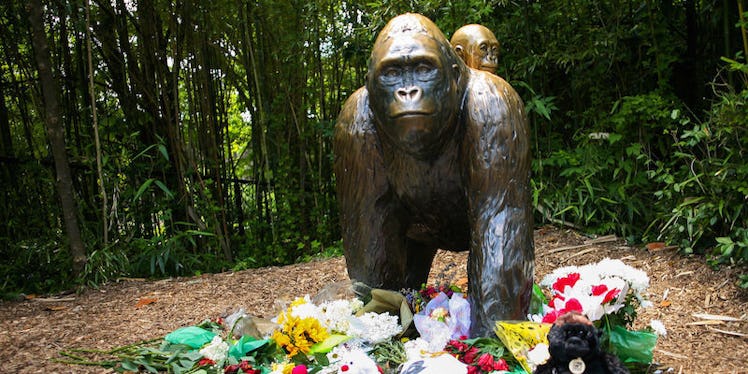
This Is How Much Harambe's Death Affects The Other Gorillas In His Troop
Ready your tear ducts because you're about to get even more emotional over everything that went down with Harambe the gorilla on Sunday.
Humans have done a pretty good job at f*cking up the ecosystem around the world. It's one of the things humans like to do the most I'm pretty sure. OK, yes, obviously not all humans wake up with the idea they're going to take big ol' dump-a-roos on the entire planet, but a bunch of us totally do.
Think of the world population as a person trying to get in shape. Sure, there is that small part of the person's brain that is like, “OK, I'll do my best to not be an awful, trash person,” but the rest of the brain is like,
ARE THOSE ENTENMANN'S IN THE OFFICE FOR THE OFFICE OR ARE THEY SOMEONE'S ENTENMANN'S?!?!?!? THEY'RE OFFICE ENTENMANN'S?!?! GIMME, GIMME, GIMME!!
That's essentially how humans treat the world, and until recently, we've done very little to stop that. Thankfully, we've had some sort of midlife crisis and are now trying to slow down, or potentially even reverse, the damage we've caused this planet.
One major way to ensure the world ecosystem doesn't implode on itself has been animal conservation movements, very much like the one Harambe was a part of, appropriately named the Gorilla Species Survival Plan, before he was shot on Sunday after a 4-year-old fell into his enclosure at the Cincinnati zoo.
With only 100,000 lowland gorillas left in the wild, the Gorilla Species Survival Plan focuses on managing breeding through the 353 gorillas placed in zoos throughout the US, an incredibly complicated matchmaking process that the chair of the GSSP and director of conservation and science at Cleveland Metroparks Zoo Kristen Lukas reportedly compared to “a really complex chess game.”
It turns out Harambe was an important cog in this program, being brought over to the Cincinnati zoo -- which has a reputation for breeding gorillas -- from Brownsville, Texas to meet and breed with two female Western Lowland Gorillas, Mara and Chewie.
His death on Sunday kinda f*cks this plan up a bit, and although they do have a batch of his semen frozen away, it's unclear if they will actually be using it in the future.
What makes matters worse is even though the ratio of male and female gorillas born is around the same, very few males get to lead and breed.
Harambe was chosen to be one of the few who would get an opportunity to do that.
There is some good news, though. The Cincinnati Zoo does have another male gorilla named Jomo who leads a troop of five adult females, meaning the breeding plan does still exist.
The sad part is Chewie and Mara are left sort of leaderless with the death of Harambe.
Here's to praying Chewie and Mara find their Beyoncé moment super fast.
Citations: What Happens to Harambes Gorilla Troop Now That He's Gone its Complicated (WIRED)